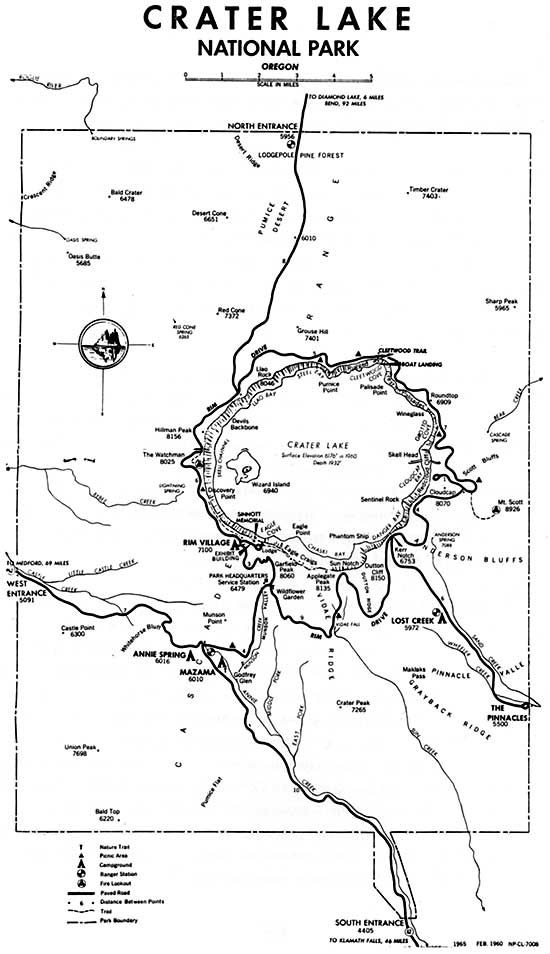Picnic areas are well used. About two percent of summer visitors use park picnic sites. Hiking is relatively light, being centered around the trails to Cleetwood Cove, Watchman Lookout, Garfield Peak, with lesser use on the Mount Scott, Union Peak, and Cascade trails. Each summer three or four horseback parties ride the Cascade Trail. Fishing is common but light on the lake and minimal on park streams. Boating is confined to concession-operated boat tours on the lake. Winter use shows a great increase in oversnow vehicle use. Over 500 such vehicles were recorded during the winter of 1968-69; most use occurs from February through April.
Significant trends in park use for the 1958-68 decade were:
Camping increased from 36,850 in 1958 to 59,947 in 1968. In 1968 overflow camping amounted to 2,123.
Camping pressure was heavy. The limiting factor was the number of developed sites; only 290 were available.
Picnicking pressure was moderate.
Hiking was steadily increasing from 7,000 in 1958 to 15,667 in 1968. This figure included guided walks.
Launch Tours by the concessioner showed a dramatic increase from 2,414 in 1958 to 6,035 in 1968.
Despite such trends park management concluded:
The trends regionally and in the park indicate increased visitor pressure. Our resource capacity has not been reached. Significant increases can be handled without going beyond the carrying capacity of this park and destroying the park values we must maintain. [66]
The Mission 66 program at Crater Lake included a variety of improvements to facilities and services designed to upgrade the quality of the “visitor experience” in the park. The elements of this “experience” were ably described in the annual park handbook. For the purpose of understanding the “visitor experience” in the park as a result of the Mission 66 program the 1965 edition of the handbook will be used. (A map of the park in 1965 may be seen below.)

The handbook contained pointers on how the visitor could explore the park on his own via roads and trails. Interpretive markers were placed at many turnouts along the park roads. Among the points of interest that the visitor could explore on his own were Rim Drive, the Pinnacles, Cloudcap, and the Pumice Desert. Launch trips around the lake and boat trips to Wizard Island were highlights of any trip to Crater Lake.
A number of hiking trails were available to bring the visitor into close contact with nature. The recently-constructed 1.1-mile Cleetwood Trail, located on the northeast wall above Cleetwood Cove, led to the lakeshore from where the launches embarked. Trails led to Garfield Peak, Discovery Point, the Watchman, and Mount Scott. A self-guiding nature trail led through the Castle Crest Wildflower Garden less than one-half mile from park headquarters.
The naturalist program, described elsewhere in this study, consisted of four principal elements. These were information, lectures, campfire programs, and guided trips.

